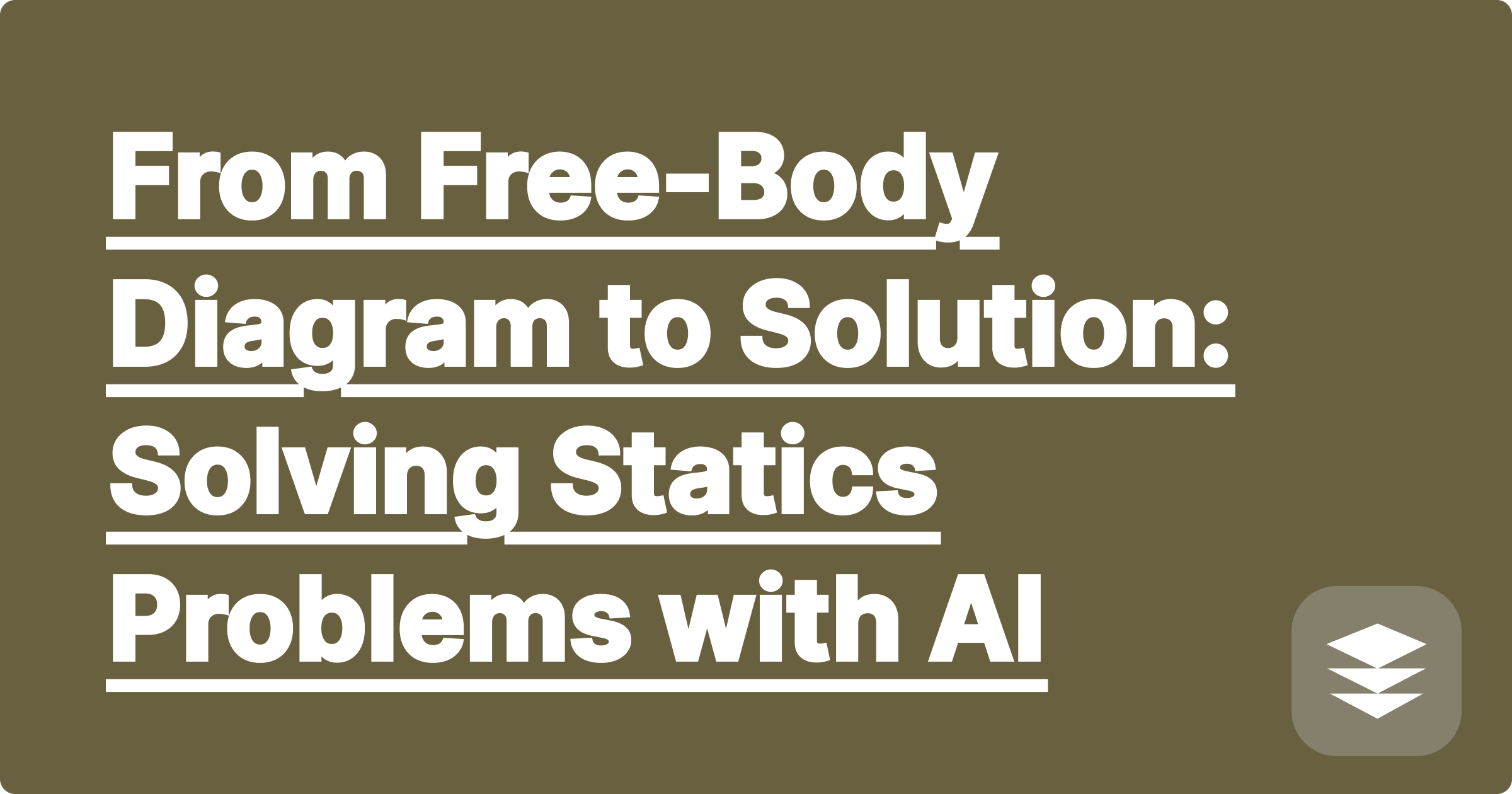
Welcome to Statics, the first and most important course in solid mechanics. The entire subject is built on a single, powerful idea: for an object to be in equilibrium, the sum of all forces and all moments acting on it must be zero. The concept is simple, but applying it to complex trusses, frames, and machines can be incredibly challenging.
The single most critical skill in all of statics is the ability to draw a correct free-body diagram (FBD). If your FBD is wrong, every calculation that follows will also be wrong. It's the foundation upon which everything else is built.
What if you had an assistant that could help you visualize the forces and then automatically set up and solve the equations of equilibrium? An AI statics problem solver like GPAI can be that assistant, acting as a free body diagram solver and a powerful calculator all in one.
An FBD is a simplified drawing of an object that shows all the external forces and moments acting on it. It's the step where you translate a physical situation into a solvable mechanics problem. Common mistakes include:
The GPAI Notetaker and Cheatsheet features can help you master the art of the FBD.
[Image: The GPAI Cheatsheet interface showing a table. Each row has a picture of a support type (pin, roller, fixed) on the left, and a diagram of its corresponding reaction forces on the right. Alt-text: A cheatsheet for free-body diagrams created with an AI.]
Once your FBD is correct, the next step is to apply the equations of equilibrium. This is where the GPAI Solver shines.
The Problem: "A 5m long beam is supported by a pin at A and a roller at B. A 500 N point load is applied 2m from A. Find the reaction forces at A and B."
How GPAI Solves It:
For more complex problems like truss analysis, the AI can handle the larger systems of equations. You can use it to:
Statics is the first course where you truly learn to think like an engineer—translating a physical object into a mathematical model. By using an AI assistant to help you perfect your free-body diagrams and to handle the resulting algebra, you can focus on developing this critical skill. You'll build a strong, intuitive understanding of how forces and moments work, which is the foundation for all of solid mechanics.
[Don't get stuck on your statics homework. Use GPAI to help you master free-body diagrams and solve equilibrium problems with ease. Sign up now for 100 free credits.]
A Step-by-Step Guide to Your First MATLAB/Simulink Project with AI
How to Design and Analyze a Simple RLC Circuit with an AI Assistant
The Ultimate Cheatsheet for Your Thermodynamics Final Exam
From Free-Body Diagram to Solution: Solving Statics Problems with AI
How to Ace Your Signals and Systems Class with an AI Fourier Analyzer
Your Personal Assistant for Fluid Mechanics Homework
How to Create an Algorithm Analysis (Big O) Cheatsheet with AI
A Guide to Writing and Verifying Mathematical Proofs with AI
How to Build a Complete Study Guide for Your Operating Systems Course
Using an AI to Solve and Explain Probability Distribution Problems